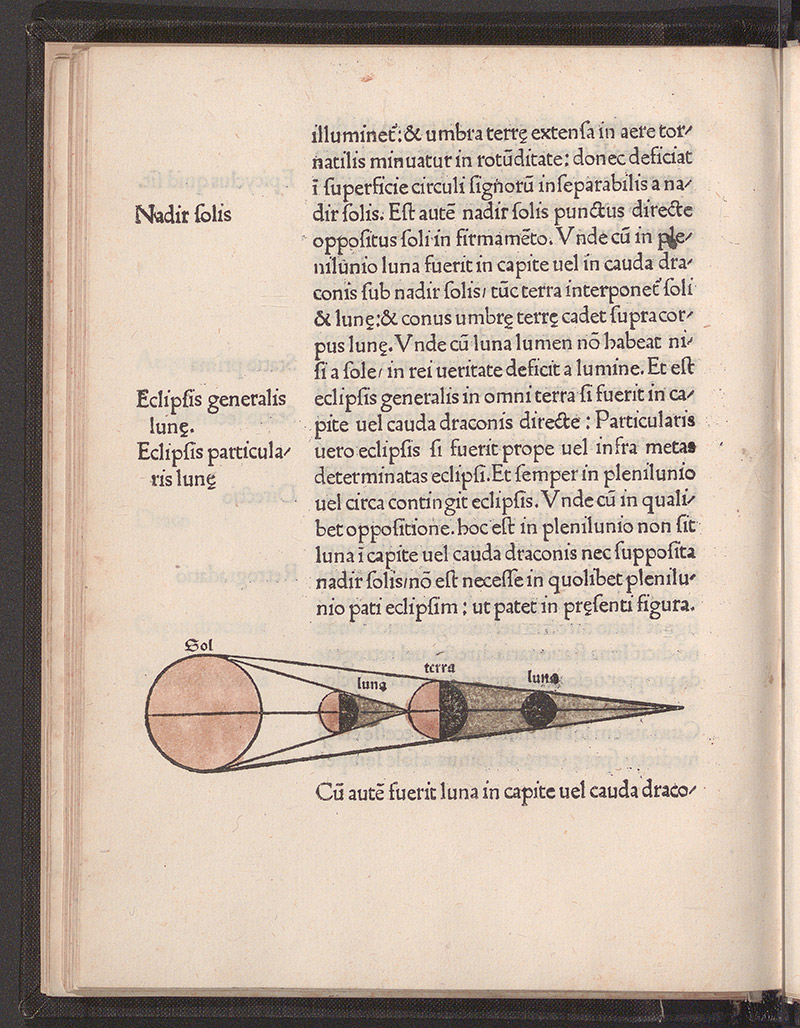Eclipses

- Fol. d5v. Woodcut depicting lunar eclipses.
- Johannes de Sacrobosco (d. ca. 1244-1256). Sphaera mundi: Gerardus Cremonensis. Theorica planetarum.
- Venice: Franciscus Renner, de Heilbronn, 1478.
This hand-colored woodcut depicts the total and partial eclipses of the Moon, and the eclipse of the Sun. In his description, Sacrobosco uses elements of vedic astrology when referring to the Moon’s nodes as the head and tail of the dragon (caput et cauda draconis), that is, Rahu and Ketu respectively. Briefly, the text shown here explains that half of the sphere of the Earth is illuminated by the Sun, the shadow of the Earth then extending in the air in the shape of a cone and diminishing its circumference untils it ends in the nadir, the point in the firmament directly opposite to the Sun. Therefore, when the Moon at full is in the head or tail of the dragon beneath the nadir of the Sun, that is, when the Moon is near the ascending (north) or descending (south) lunar node, then the Earth is located between the Sun and the Moon, and the cone of the Earth’s shadows covers the body of the Moon. But it is partial when the Moon is almost within the boundaries determined for the eclipse to happen. Regarding the solar eclipse, when the Moon in full is in the head or tail of the dragon or nearby within the limits and in conjunction with the Sun, then the Moon is located between our sight and the Sun.